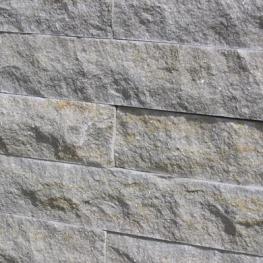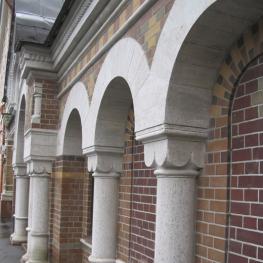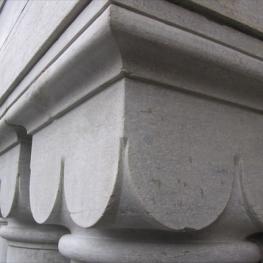Vasalemma limestone
Quarries of Vasalemma limestone are situated in Vasalemma, Rummu and Padise, all of which are in Harju County. The stone has a beautiful whitish-grey colour, marble-like structure and texture, also it is easy to process. It is a detritic limestone that because of its structure is locally also known as "Vasalemma marble". The stone formed during the Ordocivian period (408 - 439 million years ago) in a tropical sea. The stone has a limited supply. During the Soviet times this decorative limestone was massively used in the production of gravel.
The first known use of Vasalemma stone dates back to over 700 years ago. The earliest place where it was used is Padise monastery. Some older details of buildings are also known to be at the Harju-Risti church. Beginning from the 18th century Vasalemma stone was used also in areas further away - Lääne County and Hiiumaa. Tombstones and crosses were commonly made of it from 18th to 20th century. Use as a building stone in Tallinn began only in the 19-20th century. Russia has been an export market for this stone and therefore this stone can also be seen in various places in St. Petersburg.
These days Vasalemma limestone can be order in tiles and for other building details in limited amounts.
Some examples of more known places where Vasalemma stone can be found:
- Padise monastery ruins in Harju County,
- Harju-Risti church in Harju County,
- monument devoted to Russian czar Aleksandr I in Pullapää, Lääne County,
- Keila and Nissi churches in Harju County,
- Laitse mainor house in Harju County,
- Vasalemma mainor in Harju County,
- Kadrioru castle,
- Various tombstones around Estonia.
Vasalemma limestone does not have good frost resistance. Without consulting a specialist it should only be used indoors. Sometimes the stone can possess good frost resistance, but only on selected layers and blocks - which is backed up by numerous well preserved details from centuries ago. But there are examples where the stone has crumbled into calcite grains. The stone has physical-mechanical properties that vary a lot which is caused by the presence of layers of a weaker mater material throughout the stone.



